Every day, we receive a great deal of information from our senses. We use this information about the physical status of our body and the environment around us. Think of the senses: sight, hearing, touch, taste, and smell. Yet there are many other sensations that are just as essential to survival. Our nervous system detects changes in movement and gravity.
These sensory systems include:
- Balance and Movement (our vestibular sense- the knowledge of the position of one’s head in relation to gravity and movement, which is used to come down a slide or ride a playground swing without falling off) and
- Muscle and Joint Sense (proprioception- the internal awareness of the position of one’s joints and muscles in space), which allows you to lift a spoon to your mouth without spilling your soup.
Our brains must organize this information so that we may function in everyday situations such as in the classroom, at home, on the playground, and during social interactions. When one reveals all of the sensory modalities, it is truly amazing that one brain can organize input from all the senses simultaneously and still come up with a response to the demands of the environment.
The complex nature of this interaction is reflected in the following example:
Your teacher says, mother or another adult says, “Johnny, please put on your coat.” You respond by:
- Focusing your attention on the person speaking and hearing what is said.
- Screening out other information going on around you.
- Seeing the coat and adequately making a plan for how to begin.
- Seeing the armhole openings and sensing muscle and joint position, which allows you to know where to put your arms in relation to the coat sleeves.
- With your sensitive touch awareness, feeling that the coat is on your body correctly
- Relying on adequate motor planning, touch awareness, and fine motor skills to enable you to zip or button your coat.
Imagine the amount of sensory integration needed to sit in a chair, pay attention in an active classroom, copy and assignment or read a book.
Sensory Integration Disorders
What happens if one or more of our senses are not being interpreted properly? How do I know if my child has a sensory integration disorder?
A child with vague or hazy feedback about his sense of touch, body position, or movement and gravity is in a world totally foreign to ours. Imagine yourself in a world where something as basic and reliable as the pull of gravity or other children’s touch upon you is perceived as something unreliable, inconsistent, or threatening. You would not feel the usual security, safety, and fun that other children experience.
When the process of sensory integration is disordered, a number of problems in learning, motor development, or behavior may be observed:
Sensory Problems
Signs & Behaviors
Overly sensitive to touch, movements, sights, or sounds – Hyperresponsive
Behavior issues: distractible, withdrawing when touched, avoiding certain textures, clothes foods. Fearful reaction to ordinary movement activities, like playground play. Sensitive to loud noises.
Under-reactive to sensory stimulation – Hyporesponsive
Seeks out intense sensory experiences, such as body whirling, falling, and crashing into objects. May fluctuate between under- and over-responsiveness- this is due to poor registration.
Unusually high/low activity level
Constantly on the move or may be slow to get going and then fatigue easily.
Coordination problems
Could have poor balance; have great difficulty learning a new task that requires motor coordination or appears awkward, stiff, or clumsy
Delays in activities of daily living, due to motor planning deficit
Could have problems with handwriting, using scissors, tying shoes, buttoning, and zipping clothes.
Poor organization of behavior/Self regulation deficit
May be impulsive or distractible, show lack of planning in approach to tasks, or not anticipate results of actions. May have difficulty adjusting to a new situation or following directions. May get frustrated, aggressive, or withdrawn when encountering failure.
Poor self-concept
Could appear lazy, bored, or unmotivated. May avoid tasks & appear stubborn or troublesome.
